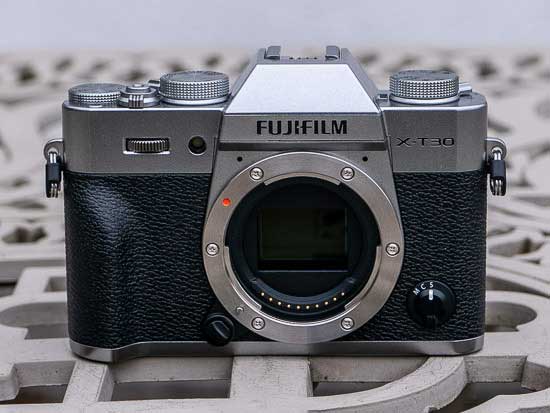
The Fujifilm XM5 and XT30II look quite different but cost exactly the same, with the former aimed primarily at smartphone upgraders and vloggers and the latter at more traditional photo-enthusiasts.
We’re bringing you this in-depth Fujifilm X-M5 vs Fujifilm X-T30 II head-to-head comparison to help you choose between these two mirrorless cameras.
You can also read our detailed Fujifilm X-M5 review and Fujifilm X-T30 II review to find out exactly what we think of both cameras.
Sensor
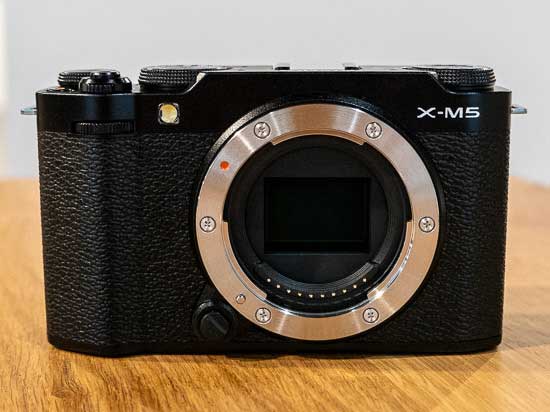
The image sensor used in the new X-M5 and also the X-T30 II is the 26.1 megapixel, APS-C sized, X-Trans 4 BSI CMOS sensor.
Both models therefore provide exactly the same image quality.
Processor
The XM5 benefits from using the latest X-Processor 5 processor, as also employed in the flagship X-H2 and X-H2S models, whereas the X-T30 II uses the previous generation X-Processor 4 processor.
This primarily means that the XM5 is able to offer more sophisticated auto-focusing and additional 6K video codecs than the XT30II.
ISO Speed
The native sensitivity range of both cameras is ISO 160 to ISO 12,800, which can be expanded to ISO 80 to ISO 51,200.
Film Simulations
The X-T30 II added two new film simulations that the original model didn’t have – Classic Neg, which is ideal for street photography, and ETERNA Bleach Bypass which faithfully simulates the film processing technique of the same name, bringing the total available to 18.
The newer X-M5 has a dedicated Film Simulation dial which provides quick access to selected simulations plus three user modes, just like on the X-T50. There are 20 film simulations in total including Reala Ace.
Video
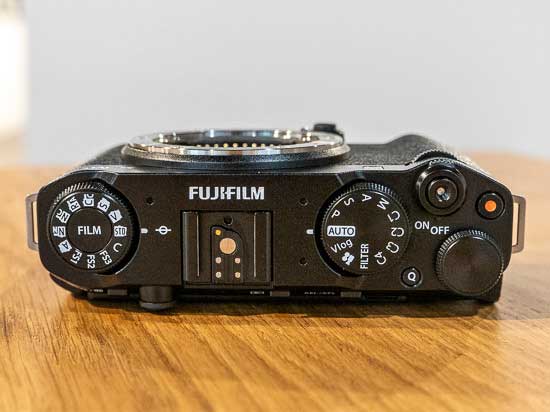
The older XT30 II only supports a highest quality rate of DCI 4K/30p with no crop, recorded in 4:2:0 8-bit internally onto an SD card and 4:2:2 10-bit via the micro-HDMI port onto an external recorder.
The XM5 offers a highest quality rate of 6.2K/30p with a modest 1.23x crop recorded in 4:2:2 10-bit internally and also supports up to DCI 4K/60p recording with a 1.17x crop factor.
Both can shoot Full HD 1080p/240p high-speed video mode, which makes them capable of capturing a fast-moving subject in slow motion up to 10x, and both support bit-rates up to 200Mbps.
The X-M5 offers the latest F-Log 2 profile with up to 14+ stops of dynamic range, whereas the X-T30 II only has the F-Log profile with 11+ stops of dynamic range.
The newer model offers up to 60min recording time at room temperature as standard, versus 30 mins on the XT30II.
Combined with a compatible HDMI recording device from Atomos or Blackmagic Design, 12-bit RAW video output from the X-M5 and X-T30 II can be recorded as Apple ProRes RAW or Blackmagic RAW.
Both models support the Long GOP and All Intra compression formats, digital image stabiliser, IS Mode Boost, different Main menu and Quick menu systems for stills and video modes, and 3.5mm MIC and headphone sockets.
The X-M5 does offer a number of video features that the X-T30 II doesn’t have.
There is a special Vlog shooting mode on the XM5 for Vlog production. Set the Shooting Mode dial to “Vlog” to quickly change key camera settings with a touch of a button for video self-portraits. It also enables the Product Priority auto-focus mode and Background Defocus option.
The brand new 9:16 short movie mode creates a 1080p vertical movie when holding the camera horizontally.
There are 3 internal directional microphones offering surround, front and back priority, plus improved wind filter and steady-state noise reduction modes.
Connection via USB cable to a smartphone is available for the first time via the new Fujifilm XApp for high-speed transfer.
The more powerful digital stabilization mode for video (1.32x crop) can now auto-correct rolling shutter in-camera and there’s a new portrait enhancer mode for both video and stills.
The new 4K Long-play mode applies a bigger crop to help reduce heat and further extend recording times.
Autofocus

The new X-M5 has exactly the same hybrid autofocus system with phase detection and and contrast detections points as the X-T30 II.
In the Single point AF mode there are up to 425 selectable AF points arranged in a 25×17 grid. Alternatively, the camera can be set to 117 points in a 13×9 grid, and the size of the points can also be varied.
In addition to Single point AF, there’s Zone AF which allows the AF points to be selected in 3×3, 5×5 or 7×7 groups, and Wide/Tracking AF.
The key difference is that only the X-M5 can automatically detect animals, birds, cars, motorcycles, bicycles, airplanes, trains, insects and drones, thanks to the latest X-Processor 5’s AI deep learning capabilities.
Burst Shooting
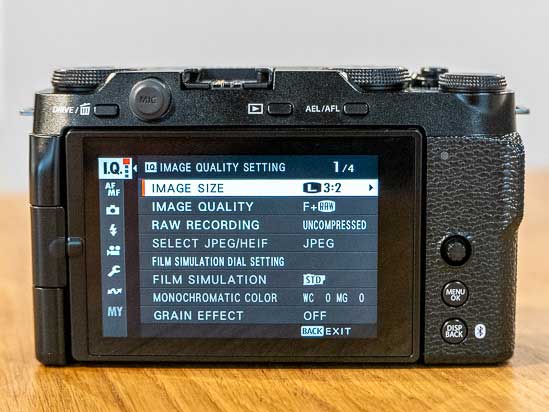
Both cameras offer 8fps continuous shooting speed when using the mechanical shutter.
If you switch to the electronic shutter, they can shoot at up to 20fps with no crop or 30fps with a 1.25x crop applied.
The XM5 has a much larger buffer than the X-T30 II for every burst shooting mode, though, especially when shooting JPEGs.
Body and Design
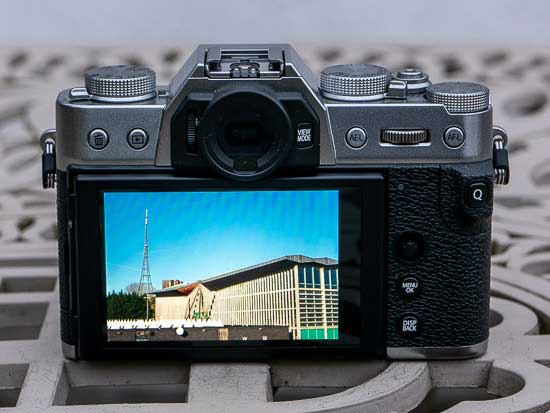
The size and weight of the body is one of the main differences between the XM5 and the XT30II.
The new X-M5 is slightly lighter and much smaller than its older brother, measuring 111.9 x 66.6 x 38.0mm and weighing in at 355g, versus 118.4 x 85.1 x 65.4mm and 378g for the XT30II.
This is mainly because the XM5 doesn’t have a built-in electronic viewfinder or a pop-up flash, both of which can be found on the XT30II, and it also has a smaller hand-grip.
The X-M5 offers a much simpler interface than the more photo-centric X-T30 II in order to try and make it more appealing to less experienced users and vloggers.
If you’ve ever considered a Fujifilm camera but been put of by its plethora of manual controls – something that a lot of people love with a passion – then the X-M5 will be more up your street.
IBIS
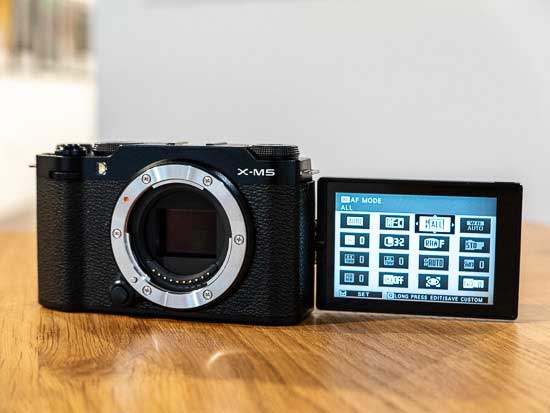
Neither camera has IBIS at all, instead relying on the OIS stabilisation offered by the attached lens (if it has any).
You’ll need to step up to the X-S20, which features 5-axis in-body image stabilisation, supporting up to a maximum of 7 stops of compensation, making it the joint-best of any current Fujifilm camera with the X-H2 and X-H2S.
Viewfinder
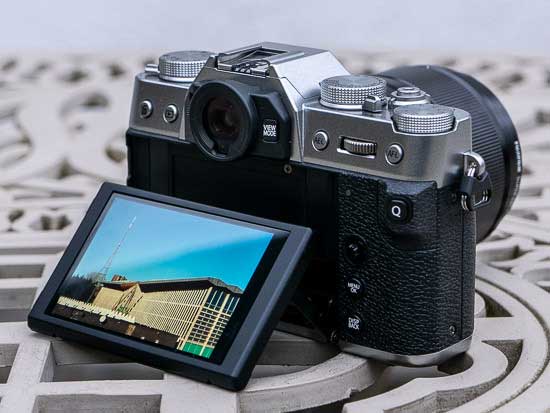
This is the second key difference between these two cameras.
The XM5 doesn’t have a built-in electronic viewfinder, whereas the X-T30 II has a 2.36M-dot OLED electronic viewfinder with 0.62x magnification, maximum 100fps refresh rate and a built-in eye sensor.
LCD Screen
This is the third key difference between these two cameras.
The X-T30 II has an LCD monitor that can be tilted up and down by 90 degrees, but can’t be tilted out to the side.
The X-M5 has a 3-inch vari-angle LCD screen that can be tilted out to the side and rotated forwards, and also folded against the back of the camera to help protect it when not in use.
There is also one other small but important difference – for the first time on an X-series camera, all the connection ports on the X-M5 are located on the opposite side of the flip-screen, with the microphone jack positioned on top, so that nothing gets in the way of the screen when it’s folded out.
Memory Cards
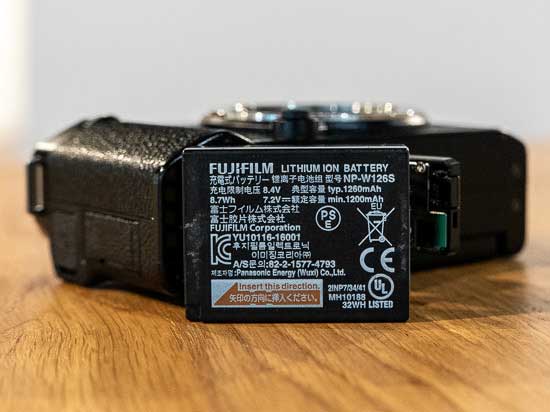
Both models only have a single memory card slot, rather than dual card slots, and both only support slower UHS-I speed cards.
The memory card slot is next to the battery in a shared compartment on the bottom of the camera, which is much less convenient, especially when the camera is mounted on a tripod.
Battery Life
The Fujifilm X-M5 uses exactly the same NP-W126S battery as the X-T30 II, which offers a CIPA-rated battery life of up to 325 shots on a single charge when using the LCD screen.
The X-M5 manages to eke out a little more life and offers up to 330 frames or 440 in Economy mode (versus 390 on the XT30II).
Both cameras can also be powered and charged via the USB-C connection, which is useful if you’re out and about and have a compatible power-bank to plug the camera into.
Webcam
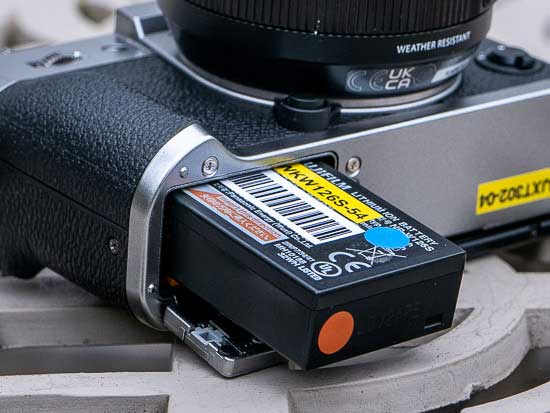
You can use a USB-Type C cable to connect the X-M5 to a computer to use it as a webcam without having to use any software, unlike the X-T30 II which has to use the Fujifilm X Webcam app.
Price
The Fujifilm X-M5 is priced at £799 / €899 / $799 body-only or £899 / €999 / $899 with the XC 15-45mm lens in the UK.
The Fujifilm X-S20 also costs £799 / €899 / $799 body-only or £899 / €999 / $899 with the XC 15-45mm lens, so it’s exactly the same as the X-M5 despite being older.
Conclusion
The new Fujifilm X-M5 is much smaller and lighter than the X-T30 II whilst offering the same image quality, extra film simulations with a dedicated dial, more advanced AF performance, greater video capabilities, larger buffer, longer battery life and a more versatile vari-angle LCD screen.
On the flip-side, it doesn’t have a built-in EVF, a pop-up flash or such a large handgrip. It also has a simpler, more video-focused user interface, which some users may prefer or not.
So what do you think? Would you choose the identically priced, newer X-M5 or the older X-E4, and why? Leave a comment below!
Your Comments
Credit : Source Post
